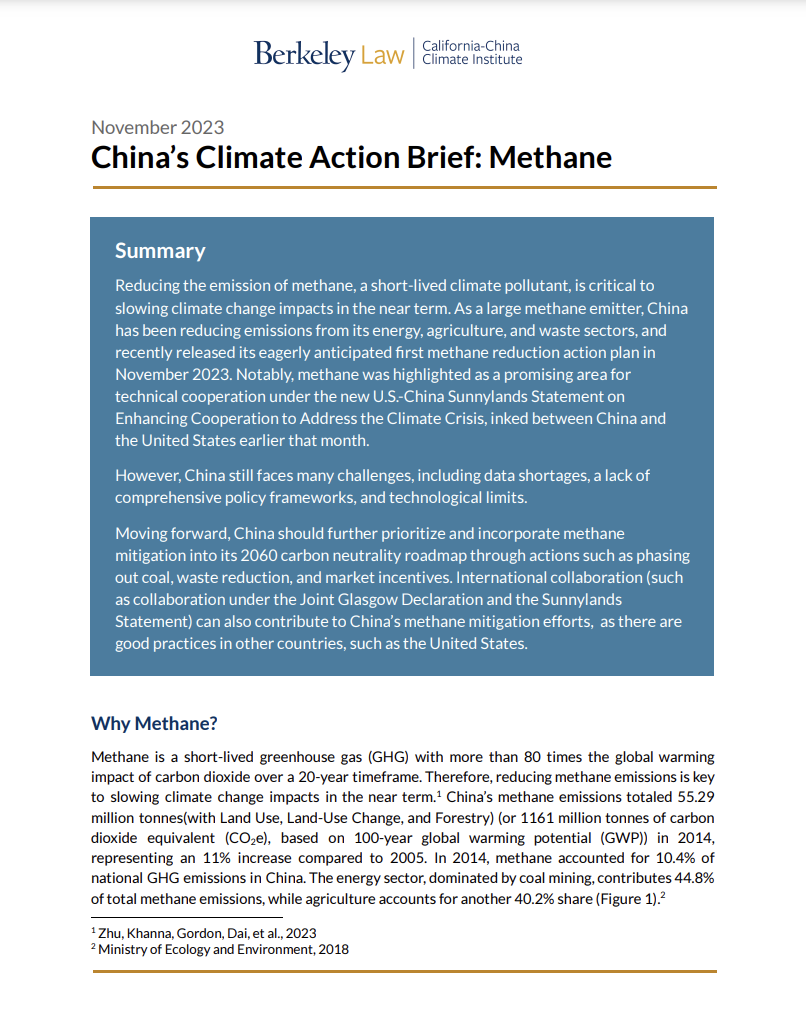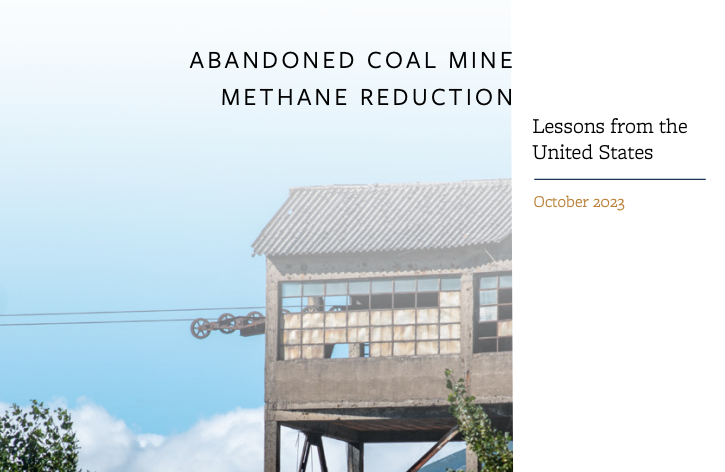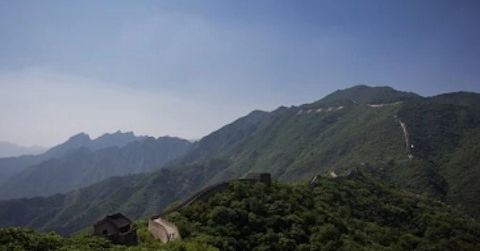DESCRIPTION
Super pollutants or short-lived climate pollutants are more potent gases, with relatively short atmospheric lifetimes and stronger global warming impacts in the near-term. These gases including methane, nitrous oxide, and fluorinated gases (i.e. hydrofluorocarbons (HFCs), perfluorocarbons, sulfur hexafluoride and nitrogen trifluoride require immediate reductions to meet climate goals. With collaborators, we examine the sources and drivers for future super pollutant emissions and various technological and policy options for addressing these gases and evaluate pathways for reducing super pollutants in the near-term, as well as the cost-effectiveness of options and international best practices.
PUBLICATIONS
 |
After launching its national methane control action plan in 2023, China has focused on reducing methane emissions by intensifying mitigation efforts at both the national and subnational levels. By 2024, several provinces demonstrated significant progress by introducing action plans with targeted projects and clear quantitative goals for managing methane from agriculture and solid waste. This brief updates the previous 2023 report by providing a data-driven analysis of subnational progress and highlighting the challenges and opportunities provinces are facing. |
 |
China's Climate Action Brief: Methane (December 2023) China has been reducing emissions from its energy, agriculture, and waste sectors, and, notably, methane was highlighted as a promising area for technical cooperation under the new U.S.-China Sunnylands Statement on Enhancing Cooperation to Address the Climate Crisis. Meanwhile, China still faces many challenges, including data shortages, a lack of comprehensive policy frameworks, and technological limits. This new brief summarizes China’s methane policies, analyzes the challenges and opportunities China is facing, and proposes recommendations.
|
 |
Abandoned Coal Mine Methane Reduction: Lessons from the This paper provides an overview of U.S. policies and implementation strategies aimed at mitigating methane emissions from abandoned coal mines. This report identifies best practices, as well as existing challenges to reducing methane emissions. Through a combination of policy, regulations, financial incentives, monitoring, and evaluation, the U.S. case example shows the successes and challenges to reducing methane emissions from abandoned coal mines. Read the Summary for Policymakers (English)>> |
 |
Reducing Methane Emissions from the Solid Waste Sector: Lessons from California's Experiences This paper provides an overview of California's policies and implementation strategies aimed at mitigating waste methane emissions, and identifies policy gaps and recommendations for future action. As the first state in the United States to adopt regulations addressing methane emissions from the solid waste sector, California has accumulated over a decade of experience in this field. Two key approaches have been adopted to tackle methane emissions: (1) diversion of organic waste from landfills, and (2) reduction of methane emissions from existing landfills. California has utilized a variety of policy instruments, including regulations, financial incentives, monitoring, and evaluation, to achieve its objectives. These efforts have yielded valuable insights into the challenges and opportunities involved in reducing methane emissions in a populous state where waste streams continue to expand. Read the Summary for Policymakers (English)>> |
 |
Emerging best-practices for reducing short-lived climate pollutants The California-China Climate Institute has released a new report outlining avenues for gaining traction and international collaboration on short-lived climate pollutants. The report offers opportunities for reducing short-lived climate pollutants for China and highlight the importance of multi-policy and multi-gas strategies by drawing out examples of these approaches from California, Canada, and the European Union. |
 |
Opportunities to Tackle Short-lived Climate Pollutants and other Greenhouse Gases for China This report provides a review of international best-practices on curbing short-lived climate pollutants, including how action can be incorporated in long-term carbon neutrality plans. It describes quantitative modeling scenarios used to identify pathways for cost-effective emissions reductions over the near, medium, and long-term. |
|
|
China’s Non-CO2 Greenhouse Gas Emissions: Future Trajectories and Mitigation Options and Potential This study uses a novel bottom-up end-use model to estimate mitigation of China’s non-CO2 GHGs under a Mitigation Scenario whereby today’s cost-efective and technologically feasible CO2 and non-CO2 mitigation measures are deployed through 2050. |
|
|
Challenges to addressing non-CO2 greenhouse gases in China’s long-term climate strategy This report argues that non-CO2 greenhouse gases should be an essential component of China’s long-term low-emissions strategy. |
RECENT ACTIVITIES
CORE RESEARCH TEAM
Rixin Zhu, Jessica Gordon, Jenn Perron
Photo source NASA Earth Observatory.



